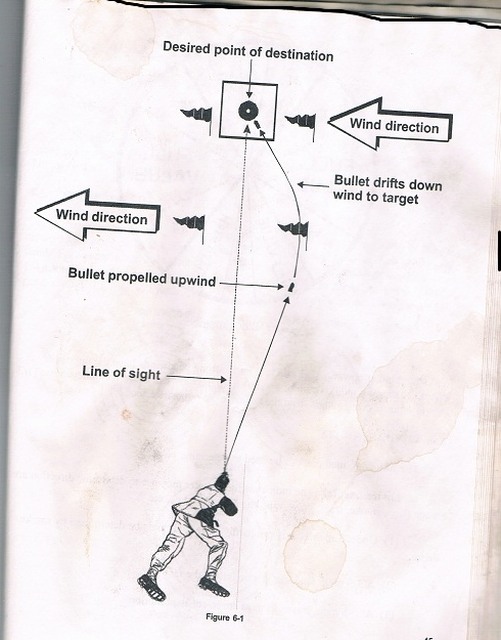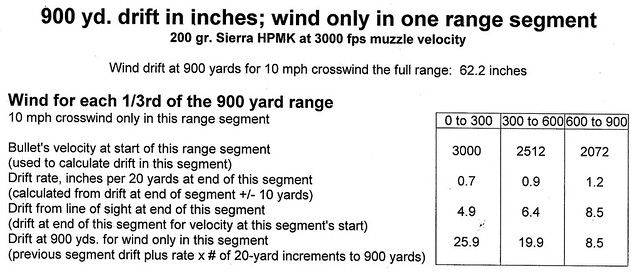David Tubb is probably one of the best long range shooters this country has ever produced.
He is the one that demonstrates using the range flags to show where the wind is most effective. He simply does what I mentioned earlier. A flag pole is about 30 feet tall. He puts a flag at the top of the pole and one at the bottom, the wind speed is normally different, and may be even blowing a different direction.
Even on flat ranges there is going to be something on the ground to disturb the wind.
Just ask yourself why the Army Marksmanship Unit, and everyone else experienced in long range shooting tell you to focus your scope at Midrange to 2/3 range, to read mirage and other wind indicators.
To see what wind really does, you can put the numbers in a BC program OR you can go to the range with a good spotting scope and see for your self.
Get right behind the shooter and observe the trace of the bullet, on a full value wind coming from 3 o'clock, you see the bullet start our toward the right and when it gets past mid range starts a sharp turn back toward the target, much like the picture I posted above.
At 1000 yards, (which is what the OP asked about) the 308 arc is between 30-35 ft above the ground.
That is the wind you should concern yourself with the most.
As to hand held wind meters. They are great, but not for what people think.
People take a reading on the firing line, and that's what they use to adjust their sights. But that isn't the wind they should be reading. They should be reading the wind at the height of the arc.
Thats where mirage comes in if there is no range flags.
To learn mirage is where the wind meter comes in. Go to the range or open field, leave your rifle home, and take your spotting scope and wind meter.
Get a reading (doesn't matter where) then look through the scope and see what the mirage is doing. What you are trying to do is learn what the mirage does at different wind speeds. You can do this at different angles to get the ideal of the mirage at different values. It doesn't matter how high off the ground, air movement is what you're looking at so you can get an idea of what mirage looks like at different wind speeds.
You do this a bit, then when shooting, you can focus your scope at 1/2 - 2/3 distance to the target at the max arc of what bullet you are shooting and get the best reading of the wind (mirage) to get you on target.
Here's a hint about focusing the scope and reading mirage, Be careful you don't go the wrong way. Meaning be careful you don't focus the scope past the target. Doing so will reverse the mirage.
I found this out the hard way when I attended the NG-MTU Coaches Clinic.
We were on 600 and the ALL Guard Shooters were taking our call. In other words they were making the corrections we were giving them, right or wrong.
After the targets were run up, showing the hits, I was on the opposite side of everyone else. Because I was focused beyond the target the mirage was reversed.
I don't have to tell you how embarrassed I was when shooting was stopped and the whole line of future coaches was brought to my point to be shown WHAT NOT TO DO.


